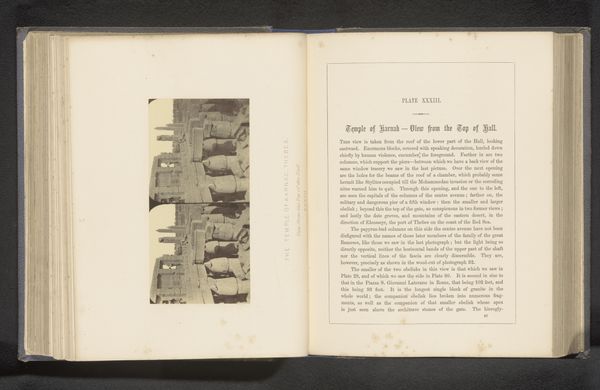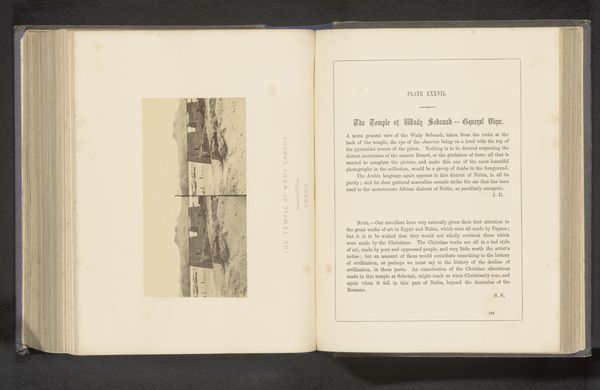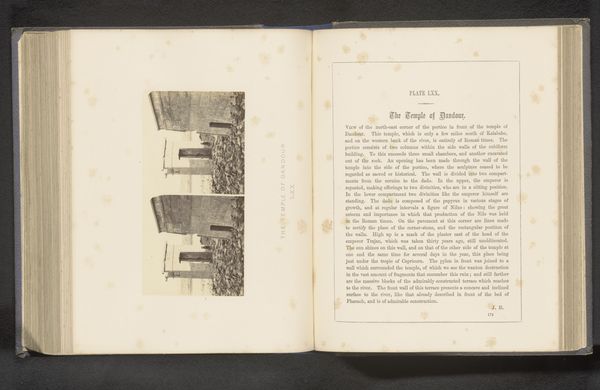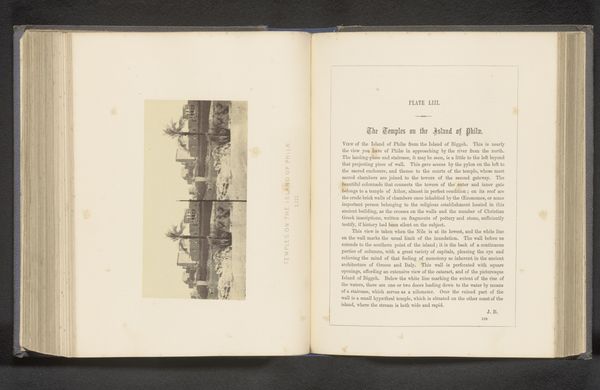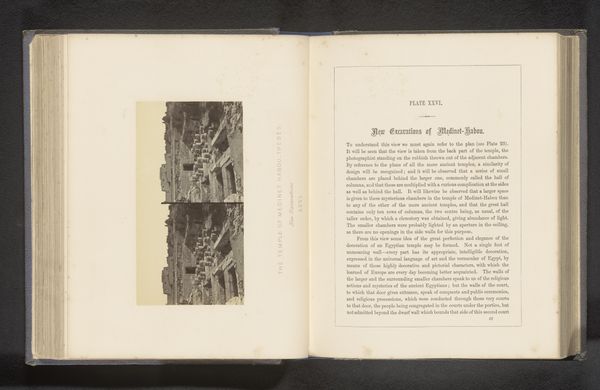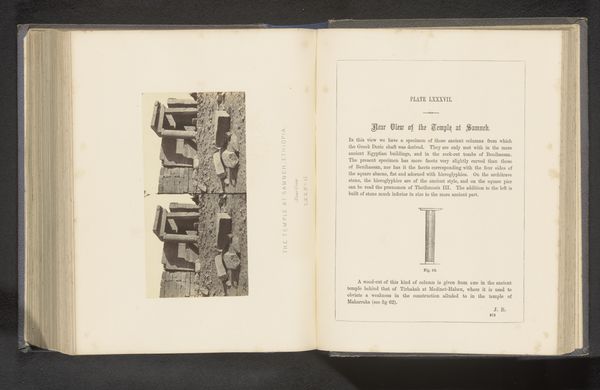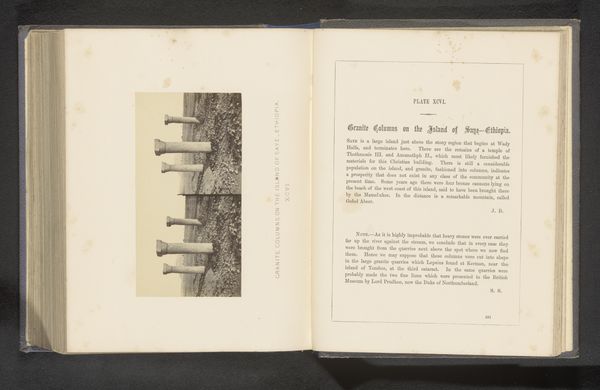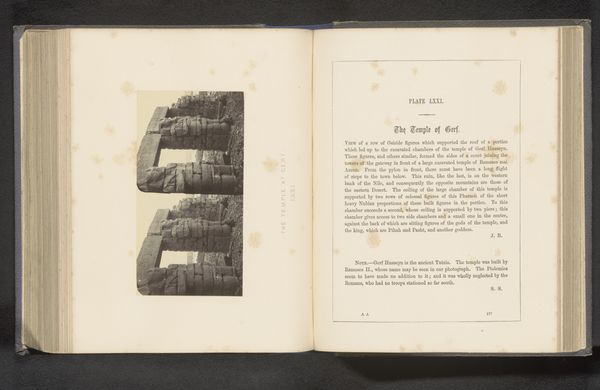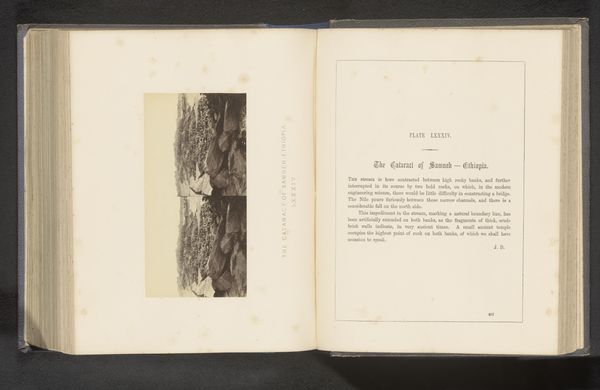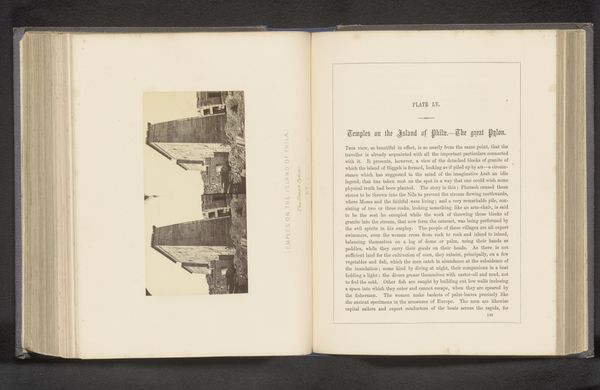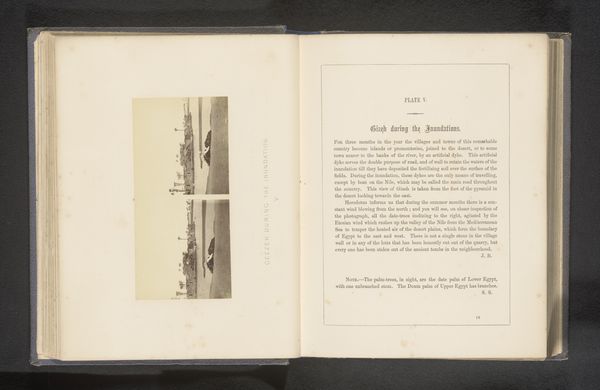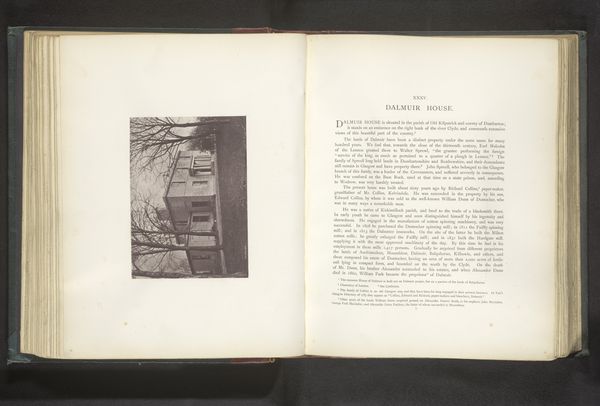
print, photography, sculpture, gelatin-silver-print
# print
#
landscape
#
ancient-egyptian-art
#
photography
#
ancient-mediterranean
#
sculpture
#
gelatin-silver-print
Dimensions: height 76 mm, width 144 mm
Copyright: Rijks Museum: Open Domain
This albumen silver print of two sphinxes near Wadi es-Sebua, was made by Francis Frith sometime in the mid-19th century, and included in a book of collected images. Photography, in its early days, was as much a chemical process as a visual art. The albumen print, popular during Frith's time, involved coating paper with egg white and silver nitrate, making it sensitive to light. This process, combined with the lengthy exposure times, imbued the final image with a unique tonal range and depth. The photograph is part of a book, and the book itself can be considered as an industrial object, given the mass production methods used in printing and binding. This mass production contrasts with the singular moment captured in the photograph, a tension that underscores the changing relationship between art, industry, and labor in the 19th century. By understanding Frith's photograph as a product of specific materials and processes, we can better appreciate its historical and cultural significance, challenging any strict distinction between fine art and documentation.
Comments
No comments
Be the first to comment and join the conversation on the ultimate creative platform.
